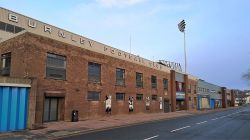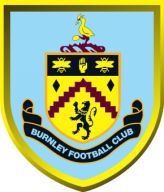Turf Moor is an association football stadium in Burnley, Lancashire, England, which has been the home of Burnley F.C. since 1883. This unbroken service makes Turf Moor the second-longest continuously used ground in English professional football. The stadium is situated on Harry Potts Way, named after the manager who won the 1959–60 First Division with the club, and has a capacity of 21,944.
The Turf Moor site has been used for sporting activities since at least 1843, when Burnley Cricket Club moved to the area. In 1883, they invited Burnley F.C. to use a pitch adjacent to the cricket field. The first grandstand was not built until 1885, while terraces were also added to each end of the ground in the same year. Between the mid-1950s and mid-1970s, all stands were rebuilt. Turf Moor underwent further refurbishment during the 1990s, when the Longside and the Bee Hole End terraces were replaced by all-seater stands following the recommendations of the Taylor Report. The ground comprises four stands: the Bob Lord Stand, the Cricket Field Stand, the North Stand and the Jimmy McIlroy Stand.
In 1886, Turf Moor became the first football ground to be visited by a member of the Royal Family, when Prince Albert Victor attended a friendly match between Burnley and Bolton Wanderers. The first Football League match at the ground took place in October 1888; Fred Poland scored the first league goal at the stadium. In 1922, Turf Moor hosted its only FA Cup semi-final and, in 1927, it was the venue of an international match between England and Wales. The stadium's record attendance was set in 1924, when 54,775 people attended an FA Cup third round game between Burnley and Huddersfield Town.
This page also has a version in other languages : Терф Мур Стадион (russian)

